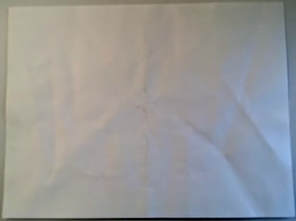|
One day in England, I found my kids digging my art out of the trash. I said, “What are you doing? That is terrible.” They said something like, “This art is going to pay for our kids to go to college someday. Remember all those sketchbook pages of half drawn people we’ve seen in the art museums by Picasso, Van Gough, Rembrandt…one day, someone will want this too.” That was the day I learned that the art I create isn’t necessarily for me. I don’t have to think it is good or valuable for it to do good or be valuable. I am shocked by some of the paintings I’ve sold because I can see so many things that, “I could have done better.” But that piece of art was just as it should be for the purchaser, it was meant for them, and I was fortunate enough to participate in the creation of it. If artists do their jobs well, people will see things they’ve overlooked their entire lives. They will learn that clouds are not white and the sky is not blue. Artists reveal that clouds can be white on top, but they have silver, gray, pink, purple, and shades of blue throughout. The sky is most blue when you look directly above your head and it is a lighter blue the closer you look to the horizon, unless you’re observing a sunrise or a sunset when the sky can be gentle purples and pinks, or brilliant yellows and oranges. It is fine to see blue skies and white clouds, but it is better to see the full truth of what you are observing. Artists and Christians, like other humans, do not get things right the first time, or the second, or third. However, artists exhibit what they think is their best art and hide the rest in portfolios under their beds. Christians sometimes act like they have it all together in public, hiding their failures at home. This pretense is not the genuine human experience even though we behave as if it is. God doesn’t expect us to be perfect, or behave perfectly. He asks us to acknowledge His perfection and live a life loving Him and those around us. It’s that easy--and that hard--so is the truth. With this understanding, today, I acknowledge my mistakes and find relief in the fact that I don’t have to hide my imperfections. I have not yet arrived as an artist or Christian, but I will continue to practice both. In the meantime, for your amusement, I provide a painting rescued from the bin by my daughter and one of my first art videos (it made my art group laugh to the point of tears). I don’t think you have to be an artist to know how bad this video is: you know what color you get when you mix red and white, right? Apparently, I forgot in a fit of patriotism. Anyway, a painting and a video to reveal the full truth of my experience as an artist and a Christian.
0 Comments
Tips and tricks:
You can do the sketches in pencil, crayon, marker, pen, watercolors, patchwork quilt, cut up and glued magazine pages.... whatever is fun for you, do it that way. Make a salt dough sculpture of your cup if you prefer. Take photographs of that cup, manipulate the image, super close up, super tiny. Just make it your own cup. If you're not happy with your results: 1. Do a google image search "cup sketches" or "goblet sketches" and look at them. Study them, what did they do that you would like to imitate? 2. Choose the most complicated looking cup you have, it may be easier to draw than a simple one. We are less likely to draw a symbol (something you would draw for a picture guessing game) when there is more detail to the cup. Our eye sees that more information is required to identify THIS particular cup. 3. Turn your cup upside down and draw it that way, it may be easier. 4. Stop erasing. Just keep drawing. Leave the wrong lines, make the good lines darker. (Think of those animation sketches with all of those random lines) 5. If it's not going well and your frustration level is high, stop. Do something else and try again later. Sometimes when a drawing isn't coming out quite right it's because I have overlooked some principal of perspective. I don't like to plan my artworks when I'm playing. I prefer to jump in and see what happens. Along the way I may realize my drawing is looking funky (not in a good way) and when I step back and think I realize this scene requires multiple vanishing points. If I like the drawing enough, I'll start again with a plan.
Don't give up on those good ideas that aren't turning out properly. Just set them aside; because, one day, when you're working on something unrelated, your mind will make a link between something you just learned and that old painting that wasn't working and you can now bring that old drawing to real life with the new insights you've acquired through patient practice of your art. |
AuthorSherry Barrett is an active artist who takes inspiration from great works of literature, historical figures, and wise people. Archives
February 2021
Categories
All
|



 RSS Feed
RSS Feed